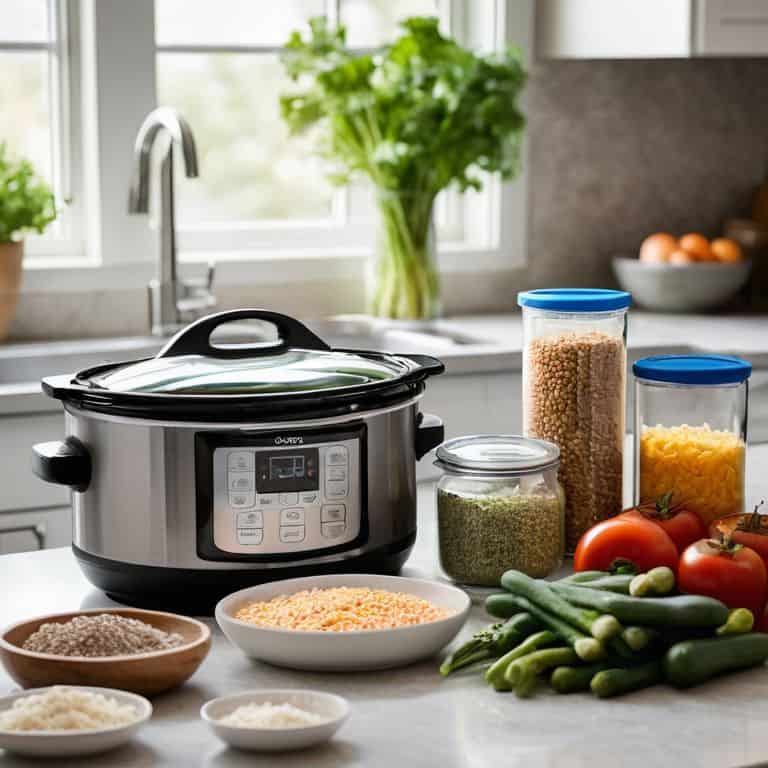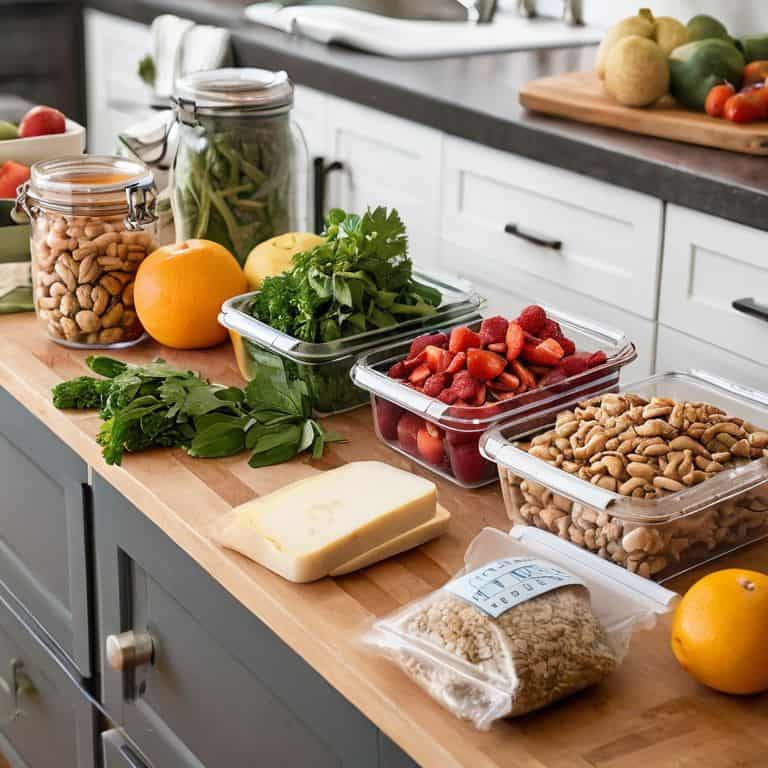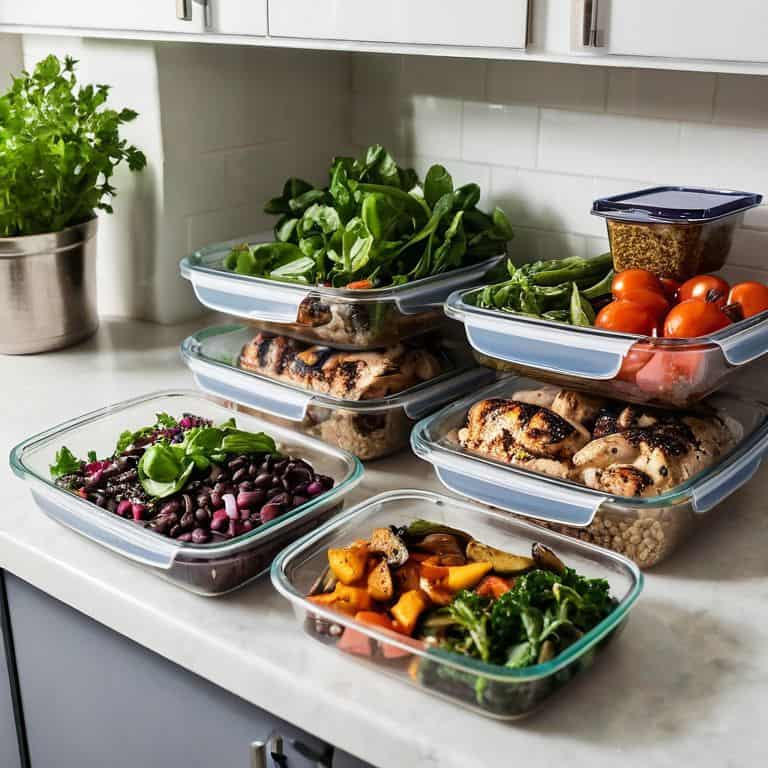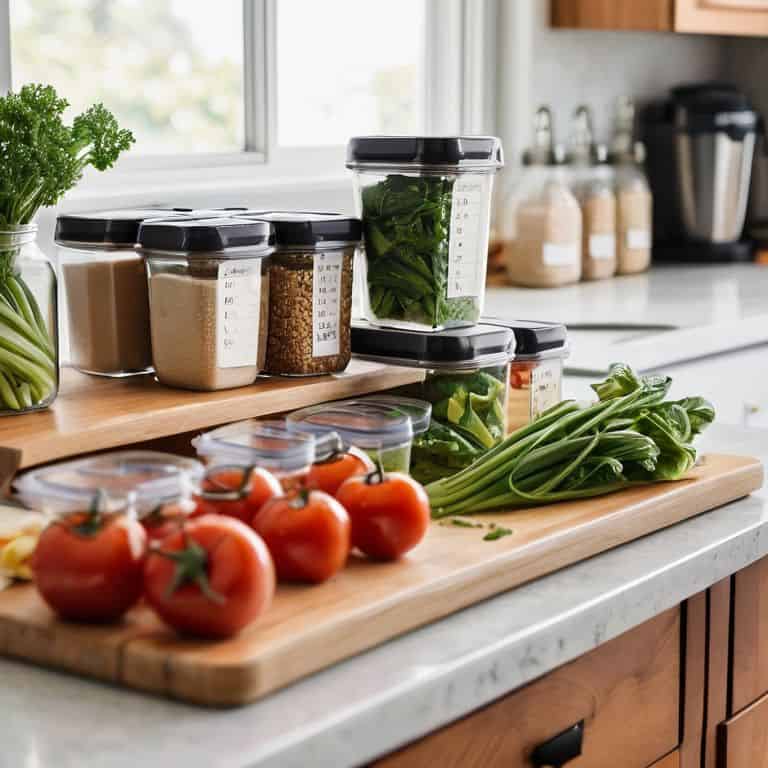As a former bush pilot, I’ve had my fair share of _challenging meals_ on the go, but I’ve learned that meal prep is not just about sustenance, it’s about strategy. When it comes to how to meal prep for a week, many of us fall into the trap of thinking it’s all about intricate planning and expensive equipment. But the truth is, it’s much simpler than that. I’ve found that with a few basic principles and a clear plan, anyone can master the art of meal prep and take control of their culinary journey.
In this article, I’ll share my _step-by-step approach_ to meal prep, honed from years of experience in the cockpit and the kitchen. You’ll learn how to break down the process into manageable tasks, create a personalized meal plan, and execute it with ease. My goal is to provide you with practical advice that you can apply immediately, without any fancy jargon or unrealistic expectations. By the end of this guide, you’ll be equipped with the knowledge and confidence to tackle how to meal prep for a week like a pro, and enjoy the benefits of healthy, delicious meals all week long.
Table of Contents
Guide Overview: What You'll Need

Total Time: 2 hours 30 minutes
Estimated Cost: $50 – $100
Difficulty Level: Intermediate
Tools Required
- Large Cooler (for storing prepped meals)
- Measuring Cups (set of dry and liquid)
- Cutting Board (plastic or wooden)
- Chef Knife (sharp)
- Container Set (reusable, airtight, and microwave-safe)
Supplies & Materials
- Proteins (chicken, fish, tofu, etc.)
- Vegetables (various, e.g., broccoli, carrots, bell peppers)
- Grains (brown rice, quinoa, whole wheat bread, etc.)
- Fruits (various, e.g., apples, bananas, berries)
- Spices and Seasonings (salt, pepper, herbs, etc.)
- Oils (olive, coconut, etc.)
Step-by-Step Instructions
- 1. First, let’s start by planning our menu for the week. This is a crucial step, just like filing a flight plan before taking off. We need to consider our dietary goals, preferences, and the number of meals we want to prep. I like to think of it as mapping out our culinary route, ensuring we have a clear direction and enough fuel to last us the entire week.
- 2. Next, we need to make a grocery list based on our planned menu. This is where we gather all the necessary ingredients, just like a pilot checks their aircraft for essential equipment before a flight. Be sure to include everything from proteins and vegetables to grains and spices. A well-organized list will help us navigate the grocery store efficiently, saving us time and reducing the risk of forgetting important items.
- 3. Now, it’s time to shop for our ingredients. This step is similar to preparing for takeoff, where every detail matters. We need to ensure we have all the necessary items, and that they are of good quality. I recommend shopping for seasonal produce to get the best flavors and textures, just like how pilots prefer flying in optimal weather conditions.
- 4. Once we have all our ingredients, it’s time to prep our kitchen. This involves cleaning and organizing our workspace, just like a pilot prepares their cockpit before a flight. Clear off any clutter, wash our hands, and make sure we have all the necessary utensils and equipment within reach. A clean and organized kitchen will help us work more efficiently and safely.
- 5. With our kitchen ready, we can start cooking our meals. This is the most exciting part of meal prep, just like the thrill of taking off into the skies. Follow your recipes, and don’t be afraid to experiment with new flavors and techniques. Remember to cook in bulk, just like how airlines often prepare meals for large groups of passengers. This will save us time and effort in the long run.
- 6. After cooking, it’s time to portion and package our meals. This step is crucial, just like how pilots need to secure their cargo before flight. Use airtight containers to keep our meals fresh, and consider labeling them with the date, meal name, and any relevant heating instructions. This will make it easy to grab-and-go, just like how pilots quickly access essential information during flight.
- 7. Finally, let’s review and adjust our meal prep plan. This is like conducting a post-flight review, where we evaluate our performance and identify areas for improvement. Take note of what worked well and what didn’t, and make adjustments for the next week. This will help us refine our meal prep strategy, ensuring we stay on course and achieve our culinary goals.
Plotting Meal Prep Success

As we navigate the world of meal prep, it’s essential to consider healthy meal prep ideas for beginners. This involves planning simple, yet nutritious meals that can be easily prepared in bulk. I like to think of it as plotting a flight plan – you need to know your destination, the route you’ll take, and the supplies you’ll need along the way. In meal prep, this means having the right grocery shopping tips to ensure you’re stocked with the freshest ingredients.
When it comes to storing your prepped meals, meal prep containers and storage are crucial. You’ll want to invest in a set of airtight containers that can keep your food fresh for several days. This will also help you stay organized and ensure that you’re eating a balanced diet throughout the week. I recommend using a weekly meal planning template to help you plan and track your meals.
As you start your meal prep journey, remember that batch cooking for weight loss can be an effective strategy. By cooking large batches of food, you can save time and money while also ensuring that you’re eating healthy, portion-controlled meals. Don’t be afraid to experiment with new meal prep recipes for one person – you can always adjust the ingredients and portion sizes to suit your needs.
Mastering Batch Cooking for Weight Loss
To master batch cooking for weight loss, it’s essential to focus on nutrient-dense ingredients and portion control. I like to think of it as navigating through turbulence – you need to be prepared and have a clear plan. By cooking large batches of lean proteins, whole grains, and vegetables, you can create a variety of healthy meals for the week. Just as a pilot uses checklists to ensure safety, you can use a batch cooking checklist to stay on track and avoid last-minute takeout or fast food.
By batch cooking, you’ll not only save time but also reduce food waste and make healthier choices. It’s all about finding a rhythm, just like a smooth flight plan. With a little practice, you’ll be able to whip up delicious, weight-loss-friendly meals in no time, and you’ll be soaring towards your goals in a safe and controlled manner, just like a well-executed flight.
Navigating Healthy Meal Prep Ideas
Just like navigating through varying weather conditions, finding healthy meal prep ideas can be a challenge. But, with a clear plan, you can chart a course for success. I always tell my flight students to start with a solid foundation, and the same applies to meal prep. Begin by identifying your dietary goals and preferences. Are you looking for low-carb options or perhaps vegetarian meals? Having a clear understanding of what you want to achieve will help you make informed decisions when it comes to meal planning.
As you explore healthy meal prep ideas, remember to keep it simple and focus on whole foods. Just as a pre-flight checklist ensures a safe takeoff, a well-planned meal prep strategy will keep you on track and ensure a smooth culinary journey.
Charting a Course for Meal Prep Success: 5 Essential Tips

- Start with a clear flight plan: Take 30 minutes to plan out your meals for the week, considering your schedule, dietary needs, and ingredient availability
- Pre-flight checks: Make a grocery list and stick to it to avoid last-minute changes and ensure you have all the necessary ingredients
- Fuel up with the right ingredients: Focus on whole foods, lean proteins, and complex carbohydrates to provide sustained energy throughout the day
- Navigate batch cooking: Cook large batches of a single ingredient, such as grains or proteins, to use throughout the week in different meals
- Maintain a clean cockpit: Set aside time each day to clean and prep for the next day’s meals, keeping your kitchen organized and your meal prep on track
Key Takeaways for Meal Prep Success
Plan your meals around your lifestyle, just as you would file a flight plan, considering your schedule, dietary needs, and ingredient availability
Master batch cooking techniques to streamline your meal prep process, reducing waste and saving time, much like a well-executed flight saves fuel and increases efficiency
Stay flexible and adapt your meal prep strategy as needed, just as a pilot adjusts course in response to changing weather conditions, to ensure you stay on track and achieve your culinary goals
Charting Your Course
Just as a well-planned flight route ensures a smooth journey, a thoughtful approach to meal prep can be the difference between a successful week and a series of turbulent meals.
Daniel Sato
Smooth Landing: Conclusion
As we touch down on our meal prep journey, let’s do a quick pre-landing checklist to ensure we’ve covered all the essentials. We’ve navigated the basics of meal prep, from planning to execution, and explored how to plot a course for culinary success. By mastering batch cooking and focusing on healthy meal prep ideas, you’ve gained the tools to create a week’s worth of delicious, nutritious meals. Remember, the key to successful meal prep is to keep it simple and be consistent, just like a well-executed flight plan.
Now that you’ve got your meal prep wings, it’s time to soar to new heights. Don’t be afraid to experiment and adapt your meal prep strategy as you go, just as a pilot adjusts their flight plan according to changing weather conditions. With meal prep, you’ll not only save time and money but also gain a sense of freedom and control over your diet and health. As your trusted flight instructor, I’m confident that you’ll reach your destination – a healthier, happier you – with meal prep as your co-pilot. So go ahead, take to the skies, and bon appétit!
Frequently Asked Questions
How do I determine the right portion sizes for my meal prep to ensure I'm eating enough but not too much?
To determine the right portion sizes, think of it like filing a flight plan – you need to know your destination and the fuel you’ll need to get there. For meal prep, your destination is your daily calorie goal, and your fuel is the food. Aim for balanced portions: protein, complex carbs, and healthy fats, just like a well-balanced aircraft has the right mix of fuel and cargo.
What are some tips for keeping meal prep interesting and preventing food boredom throughout the week?
Just like navigating through changing weather conditions, keeping meal prep interesting requires flexibility. I recommend switching up your batch cooking recipes every few days and incorporating new ingredients to keep flavors fresh. Think of it as filing a new flight plan – it keeps things exciting and prevents boredom.
Can I still meal prep if I have dietary restrictions or preferences, such as vegetarian or gluten-free?
Absolutely, meal prep is still possible with dietary restrictions. As a flight instructor, I compare it to filing a flight plan – you need to consider your specific requirements. For vegetarian or gluten-free diets, simply adjust your ‘flight route’ by choosing suitable ingredients and recipes, and you’ll be cleared for a safe and healthy culinary journey.
